Staying Strong, Steady and Independent: Why Mobility Matters in Later Life
- damienhwright
- May 27
- 4 min read
As we grow older, it’s natural for our bodies to change. Joints may stiffen, muscles may lose strength, and we might find that everyday movements take a little more effort than they used to. But ageing doesn't have to mean giving up our independence or freedom of movement. With the right approach, mobility can be maintained, improved, and even regained – helping people stay confident, active and connected to their communities.
This blog is designed to support older adults, carers, and fitness professionals in understanding the importance of mobility, why it declines, and what can be done to support it.

Why Does Mobility Decline With Age?
Several natural changes occur as we age that can affect mobility:
Muscle loss (sarcopenia): Starting around the age of 30, we begin to lose muscle mass and strength, which can accelerate with age.
Joint stiffness and arthritis: Cartilage wears down and inflammation can limit range of motion.
Balance and coordination changes: Inner ear function, vision and reflexes all contribute to a reduced sense of balance.
Fear of falling: A previous fall or reduced confidence can lead to avoidance of movement, making things worse over time.
Understanding these changes helps us appreciate why maintaining mobility takes active effort.
The Importance of Maintaining Mobility
Mobility underpins so much more than walking. It supports:
Independence: Being able to dress, cook, wash and get out to appointments and social events.
Mental wellbeing: Movement releases mood-boosting hormones and allows social interaction.
Fall prevention: Strong muscles and good balance help prevent accidents.
Long-term health: Reduces risk of heart disease, type 2 diabetes and cognitive decline.
Staying mobile can mean the difference between thriving in older age and becoming housebound. Fortunately, simple daily exercises can go a long way.
Exercises to Improve and Maintain Mobility
These exercises are designed to be safe, effective, and require little to no equipment. Always consult a GP or physiotherapist before starting a new programme, especially if there are existing medical conditions.
1. Joint-Friendly Strengthening Exercises
Sit-to-Stand
How to do it: Sit on a sturdy chair with feet hip-width apart and hands on your thighs. Lean forward slightly and stand up using your legs. Sit back down slowly.
Why it helps: Builds leg strength and mimics everyday movements.
Wall Push-Ups
How to do it: Stand about an arm's length from a wall. Place your hands flat on the wall at shoulder height. Lower your body towards the wall, then push back.
Why it helps: Strengthens arms and shoulders without strain.
Resistance Band Rows (Optional Equipment)
How to do it: Sit on a chair, loop a resistance band around a solid object or your feet. Hold the ends and pull back as if rowing.
Why it helps: Strengthens back and posture muscles.
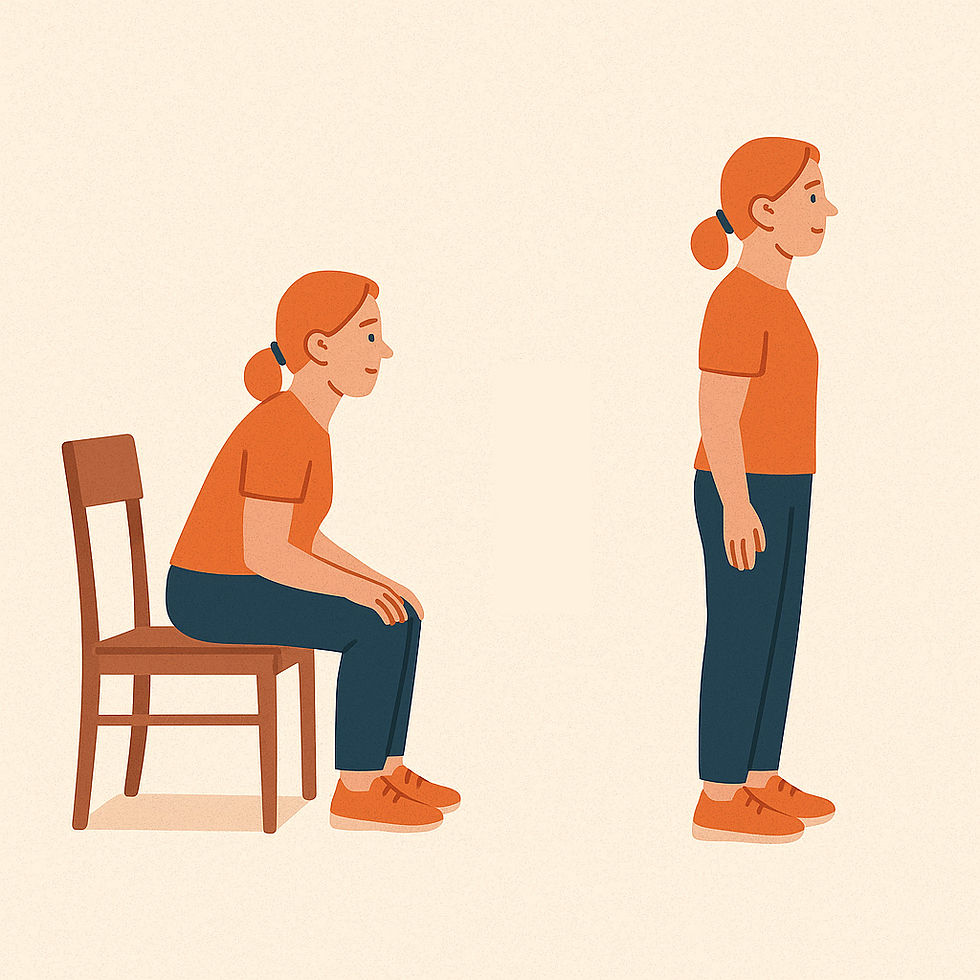
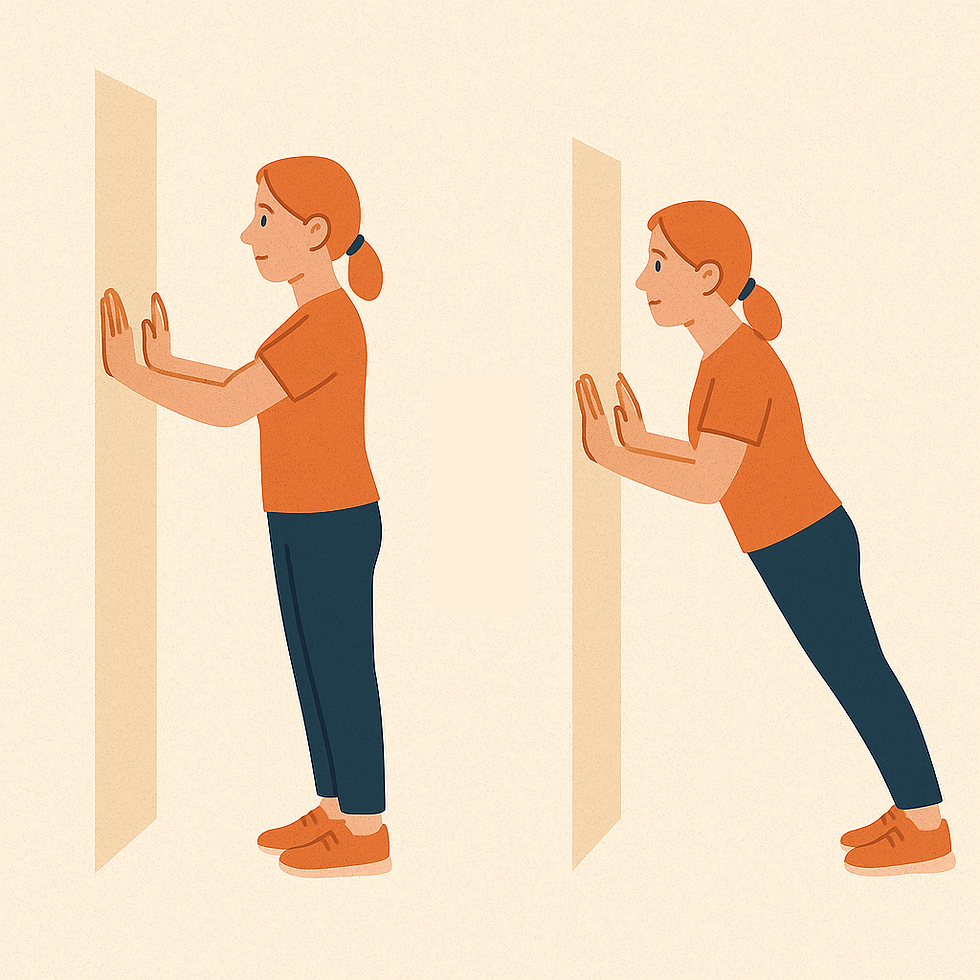

2. Balance and Coordination
Heel-to-Toe Walk
How to do it: Walk in a straight line, placing one foot directly in front of the other, heel to toe. Use a counter or wall for support.
Why it helps: Improves balance and coordination.
Single-Leg Stands (With Support)
How to do it: Stand behind a chair and hold the backrest. Lift one foot off the ground and balance on the other. Hold for 10 seconds, then switch sides.
Why it helps: Strengthens ankles and improves steadiness.

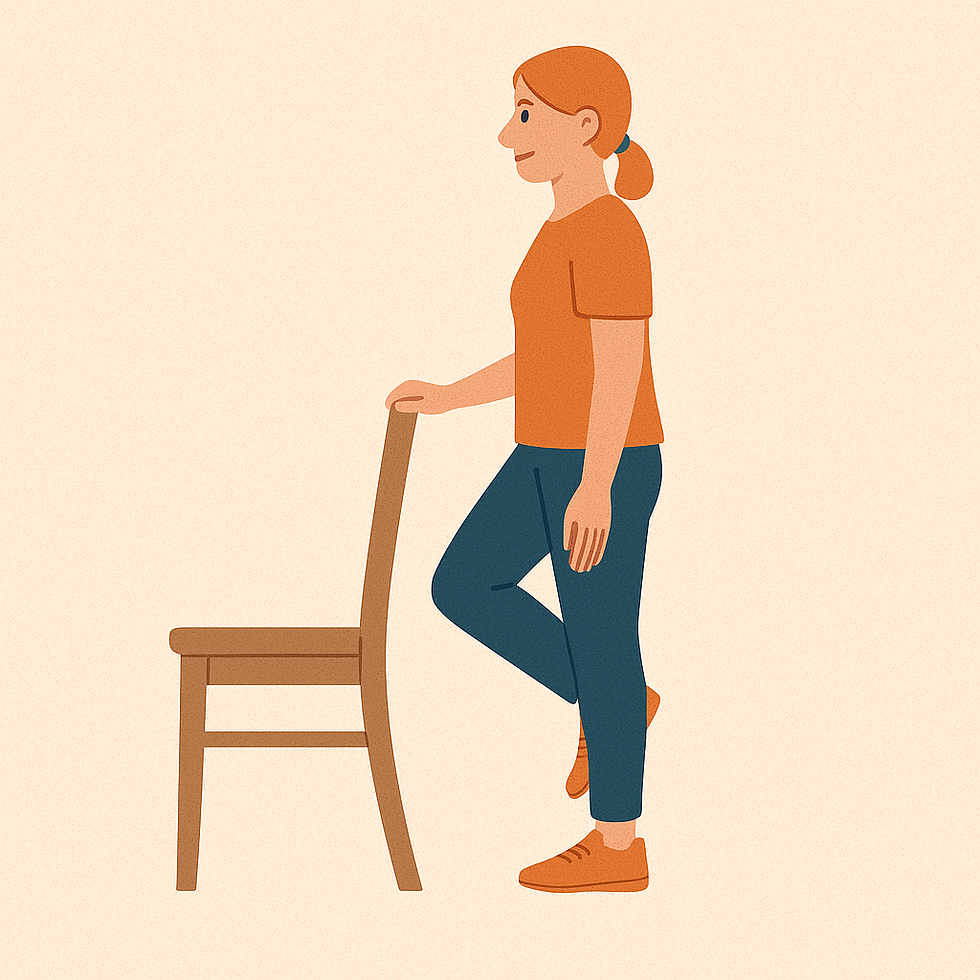
3. Gentle Stretching for Flexibility
Neck and Shoulder Rolls
How to do it: Gently turn your head from side to side. Roll your shoulders backwards and forwards.
Why it helps: Keeps the upper body flexible and reduces tension.
Calf Stretch (Using Wall or Chair)
How to do it: Stand and place your hands on the wall or a sturdy chair. Step one leg back, keeping it straight with heel on the floor. Bend the front knee and hold for 15 seconds. Switch sides.
Why it helps: Maintains flexibility in legs.
Seated Hamstring Stretch
How to do it: Sit near the front of a chair. Extend one leg out straight with heel on the floor and toes up. Lean forward gently over the extended leg.
Why it helps: Stretches the back of the legs.
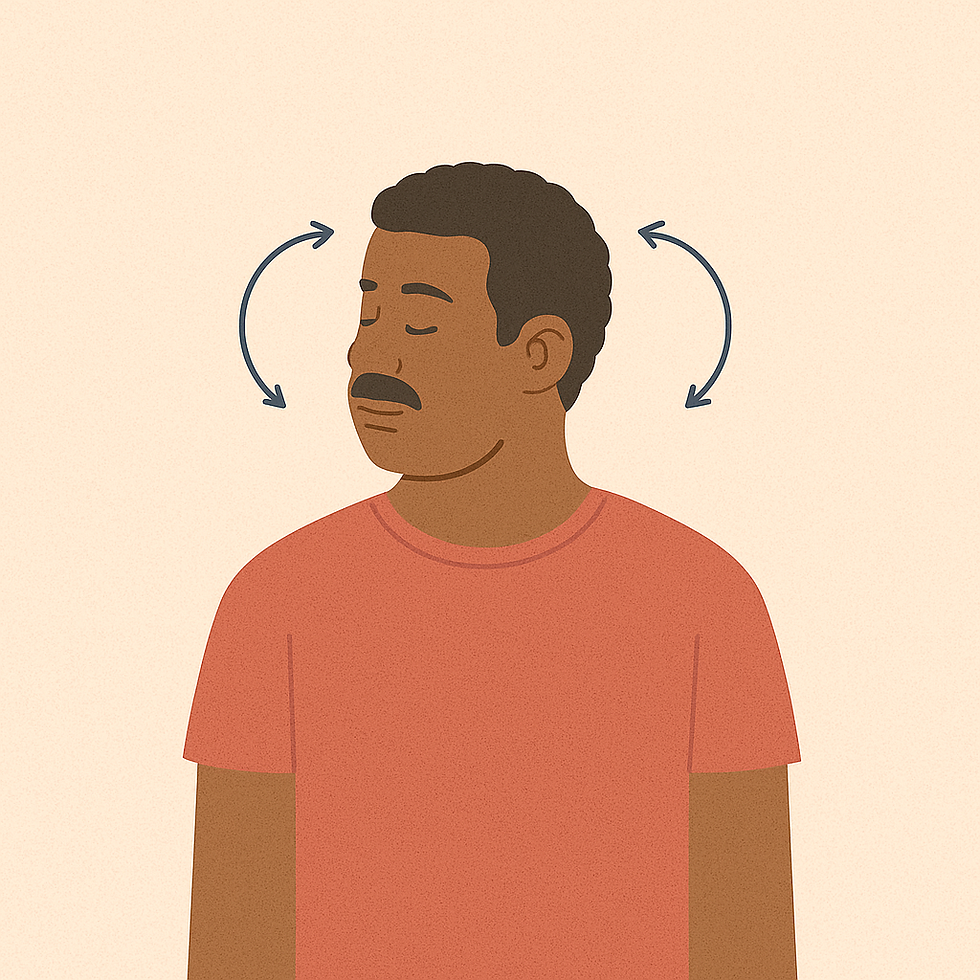

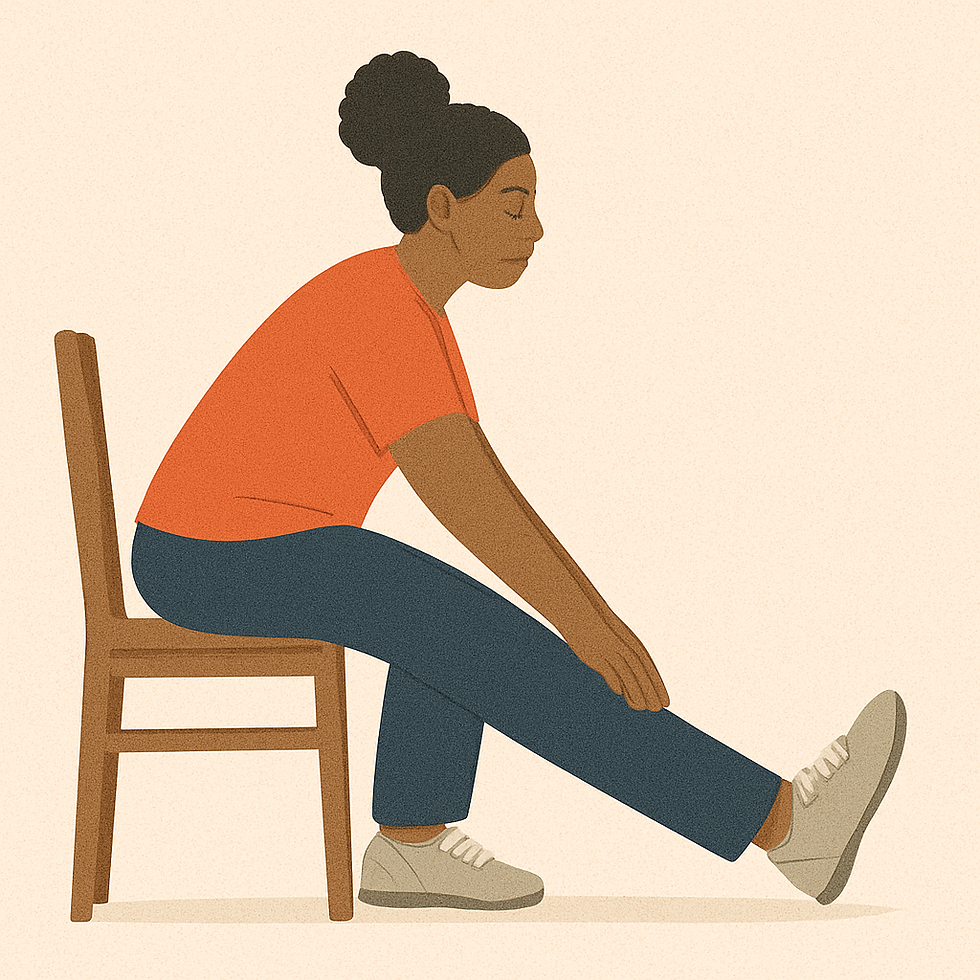
4. Functional Mobility Drills
Marching on the Spot
How to do it: While standing (hold onto a counter if needed), lift your knees one at a time in a marching motion.
Why it helps: Keeps hips mobile and strengthens legs.
Side Steps Along a Counter
How to do it: Take small steps to the side along a kitchen counter, keeping hands lightly resting for balance. Step back in the other direction.
Why it helps: Builds lateral movement and hip strength.
Reaching and Lifting Practice
How to do it: Practice reaching for a light object on a shelf and placing it down. Try lifting a small item from the floor safely.
Why it helps: Encourages everyday movement patterns and safe bending techniques.
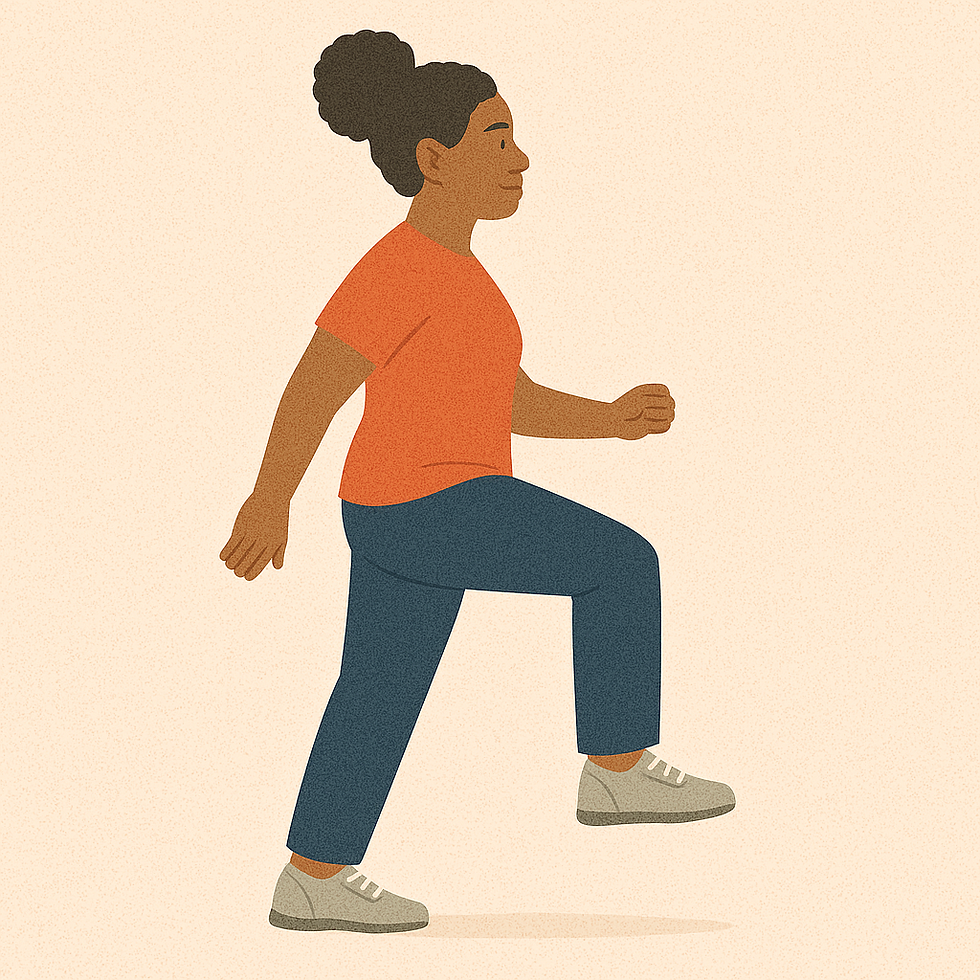
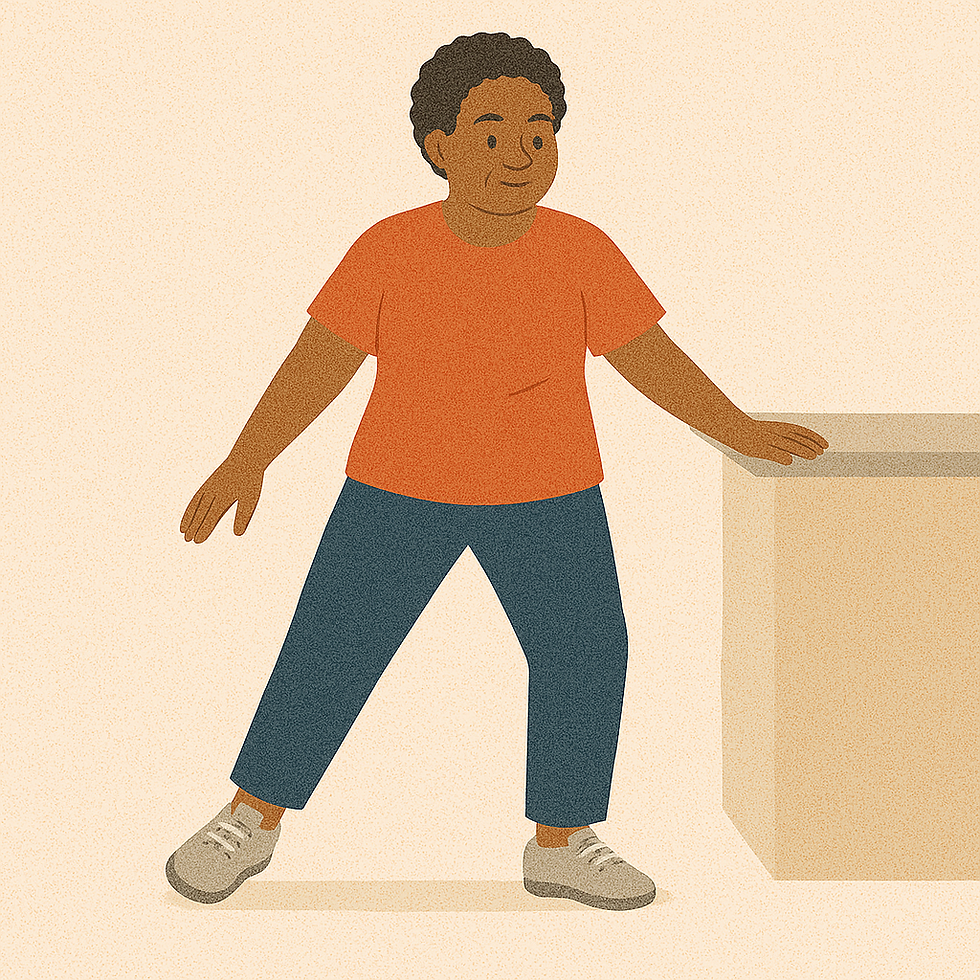

Safety First: For Carers and Fitness Professionals
Supporting older adults with mobility exercises requires a few precautions:
Check the environment: Ensure there is adequate space, good lighting and no trip hazards.
Choose the right support: Chairs with arms, counters, and non-slip mats provide reassurance.
Progress slowly: Start with low repetitions and build up gradually.
Watch for fatigue or pain: Discomfort should not be ignored. Modify or stop exercises as needed.
Encouragement and consistency make the biggest difference. Short daily routines are more beneficial than occasional intensive sessions.
Tips for Making It a Habit
Make It Social: Exercising with a friend or in a group encourages routine and adds joy.
Incorporate Music: Gentle music can make movement more enjoyable and rhythmic.
Track Progress: Simple notes like “I did 6 sit-to-stands today” can motivate and build confidence.
Link to Everyday Tasks: Emphasise how each movement supports independence – standing from a chair, walking confidently, bending safely.
Mobility is not just about moving – it's about living. It enables older adults to stay engaged, confident and connected. While ageing brings natural changes, it’s never too late to move more and move better.
Whether you are an older adult wanting to stay active, a carer supporting someone else, or a fitness professional seeking exercises to share – building mobility into daily life is one of the best things we can do for long-term wellbeing.
Take it step by step, and celebrate each gain, no matter how small.
This article is based on guidance from NHS, Age UK, Chartered Society of Physiotherapy and Public Health England. Always consult a healthcare professional before starting a new exercise regime.



Comments